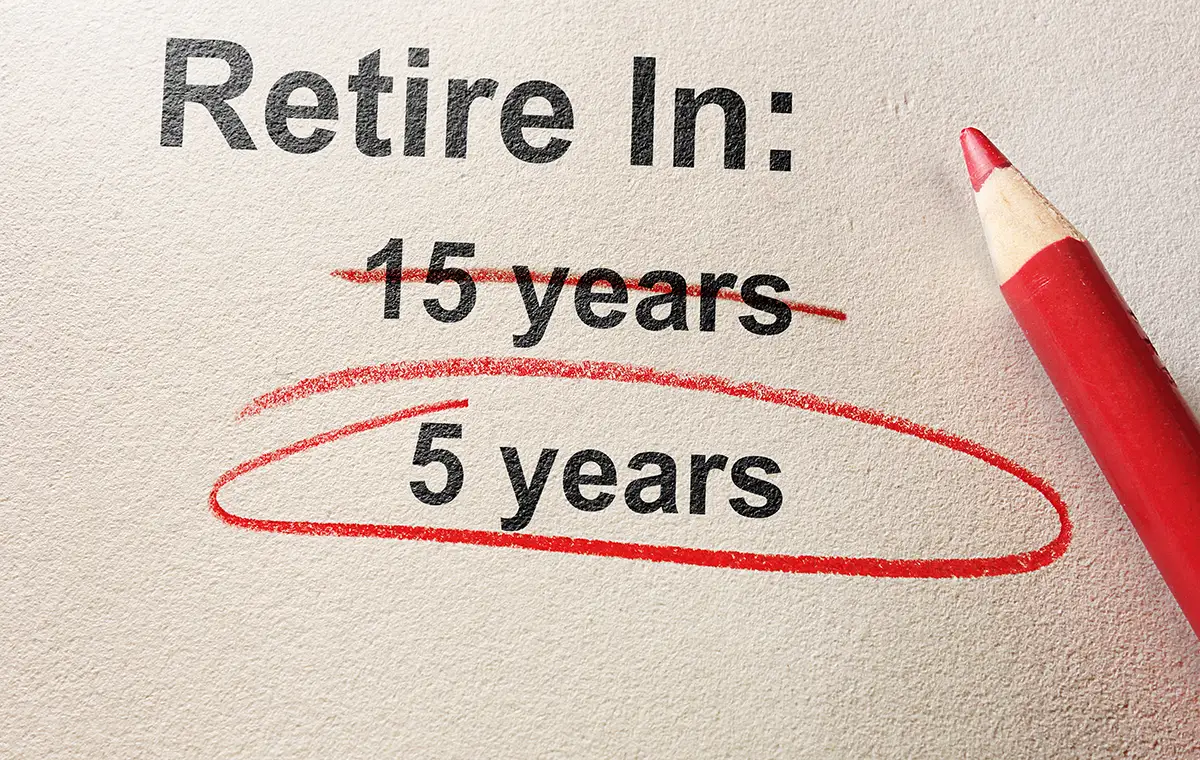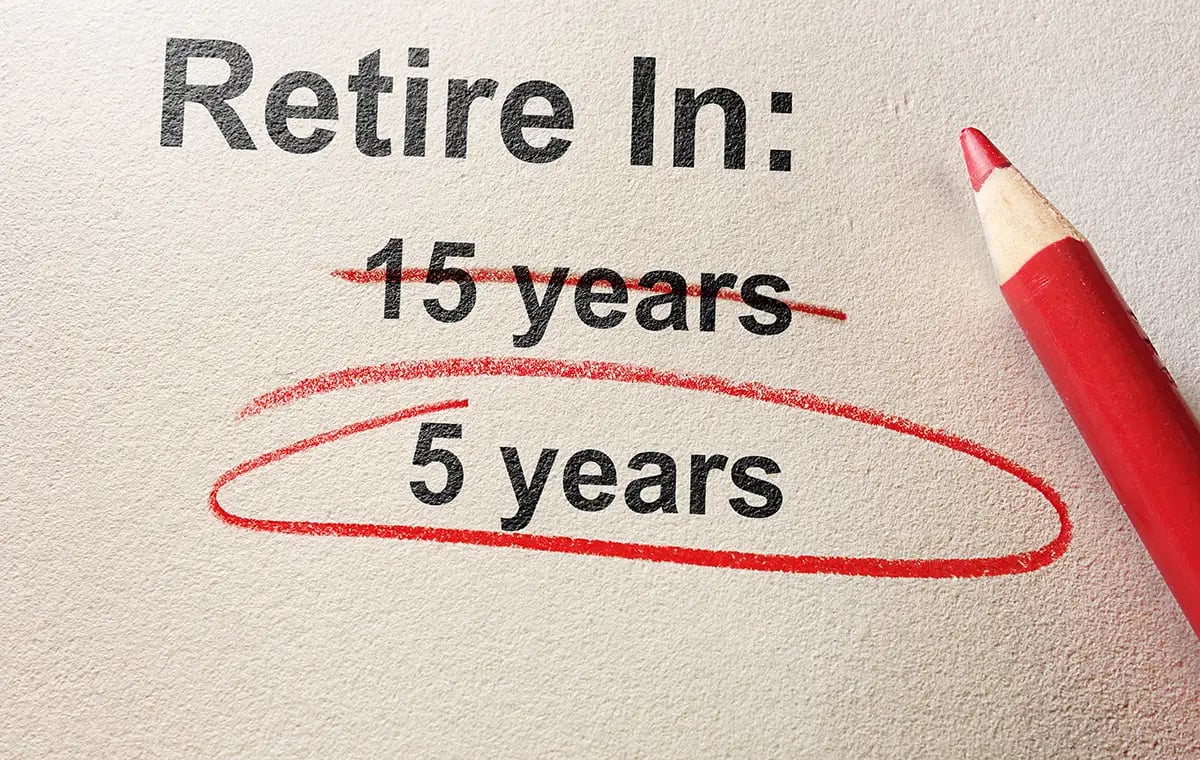How to plan for retirement in your 30s (tips + examples)
If you’re reading this right now, and you’re in your 30s, I am willing to wager that you get in the abstract sense why planning early for retirement...
4 min read
 Laura Herrington
:
Dec 18, 2023 9:30:00 AM
Laura Herrington
:
Dec 18, 2023 9:30:00 AM

It’s an exciting time of your life when you’re between 25 and 35 years old: you’re figuring out what you want your life to look like, you’re starting out in your career (or coming into your own as an established professional or entrepreneur), and you might be starting a family — or even expanding it!

At this phase in your life, middle age may feel very far away. Retirement may feel a bit like a dream, too far off into the future to feel real. Still, when you have a major life event — marriage, birth of a child, divorce, starting your own business, and so on — it can challenge you to pause and reflect on how you’re planning for the future.
🔎 Related: How much does investment management cost?
“Am I doing everything I should be doing?”
“Is it enough to just be saving for retirement?”
“Are there investment options I should consider to secure my future?”
While conversations around investing for retirement can open you up to opportunities you may have never thought of, it can also feel a little stressful. It’s complicated, and these are not choices you want to get wrong.
If this sounds like you, I want you to take a deep breath.
Yes, these are important financial choices you’re making. However, if you’re reading this article right now, that means you’re ahead of the game. So, what are the real advantages of investing for retirement early? And what are the do's and don’ts you should keep in mind as you embark on this journey? Let’s talk about it!
The bottom line advantage of investing for retirement early is that you have more time. You have more years, more market cycles, more financial seasons to go through to hit your financial goals for retirement through investing.
The earlier you start, the more time you have to make mistakes (which happen to us all), and even more time to get things right, as you gain more experience. If you don’t feel as though you have much money to invest, no problem. You can start small at first and increase your contributions gradually over time.
Starting early also gives you more time to take advantage of the power of compound interest — the secret sauce that really boosts your account balance over time.
🔑 Free resource: Financial planning template for individuals and families
Now, when we say “investing for retirement early,” ideally we’re talking about ages 25 to 35. However, if you’re closer to 40 to 45, you’re still ahead of the curve in many ways. Just because you’re not as early as others doesn’t mean you’re missed your chance to get ahead.
While it is impossible for me to lay out a detailed retirement investment plan for you in this article — I strongly urge you to talk to a financial advisor to develop a strategy that is unique to your goals and circumstances — let’s review a few best practices that will help you in your journey.
In addition to having more time and more market cycles in which to save and invest for retirement, one of the benefits of starting early is capturing any employer match you may have available through your job. The employer match is your compensation — do not leave this on the table!
🔎 Related: How to choose a financial advisor (tips + questions to ask)
If your employer offers a 401k with a match, you should contribute whatever amount is required to capture this. For example, if your employer will match your contribution dollar-for-dollar up to 5%, I would strongly recommend contributing 5% of your salary to your retirement plan.
If this is all you can contribute, great! You're saving for retirement and your employer is helping you out. If you can contribute more than this, GREAT! You're in even better shape.
How much should you be saving for retirement? A good goal is 15% of your salary. If you can't save 15%, start smaller and increase your savings over time. If you increase your savings 1% to 2% each year as you receive annual pay increases, you won't even notice the difference.
Whether you're working with an investment manager or choose to go completely DIY, you need to understand the costs and fees associated with your investments. There may be trading fees, mutual fund fees, expense ratios, and more.
Professional investment managers typically charge for assets under management, though other fee arrangements (hourly, for example) are out there. Educate yourself as much as possible about what you're paying for and why.
🔎 Related: Tax savings strategies for high income earners (+ examples)
Whatever payment structure you agree to, remember you must make that much back in your investments just to break even. That’s why, often when it comes to making smart decisions for retirement, one of the most important decisions you’ll make is who you choose as your investment management partner.
Truly, the only mistake you can make right now when it comes to investing for retirement early is letting anxiety paralyze you into inaction. If you’re a perfectionist like I am, I know it can feel scary to jump into something so important without having every “i” dotted and “t” crossed.
Keep in mind that you’re not going to do everything perfectly. Even the most well-respected investment advisors aren't perfect. Assuming you’re thoughtful in who you choose to work with, yes, they will absolutely do the best they can for you. But there’s a reason why some question whether or not the stock market is like gambling — there are definitely risks involved.
🔎 Related: How to invest for retirement at age 40 (+ examples)
Again, the earlier you start, the more time you’ll have to learn and grow. You’ll not only learn more about how investing works, you’ll also discover what your own risk tolerance is, because it’s different for everyone! On top of that, you may have multiple investment management relationships over the years as your needs and goals change.
Yes, you’ll likely make a few mistakes early on, but that’s OK. Trust me when I say you'll be in good company (It's a little bit like playing football — you can't be afraid to get hit, and taking a hit isn't a sign of failure). The stakes are lower now than they will be years later. The only real mistake you can make right now is not getting started. Go ahead and explore your options, make a decision, and take action!
Need help getting started? Start a conversation with us, we'd be happy to answer any questions you may have about your unique circumstances.

If you’re reading this right now, and you’re in your 30s, I am willing to wager that you get in the abstract sense why planning early for retirement...

1 min read
As the title implies, you’re here because you want to develop a deeper understanding of what the true risks of investing are, and this may be for a...

Let’s be honest. If you’re here to learn about estate planning costs, we’re about to walk into a conversation that no one really wants to have. It...

How to Invest for Retirement at Age 40 (Examples + Tips) Let's be honest. Once you reach the age of 40, things start to feel ... well, a bit more...

College and university endowments are absolute marvels. Yes, you play an essential role in the long-term health and sustainability of your...

We’re going back to financial school today, everyone. I don’t care if you’re new to investing or you consider yourself at least marginally...